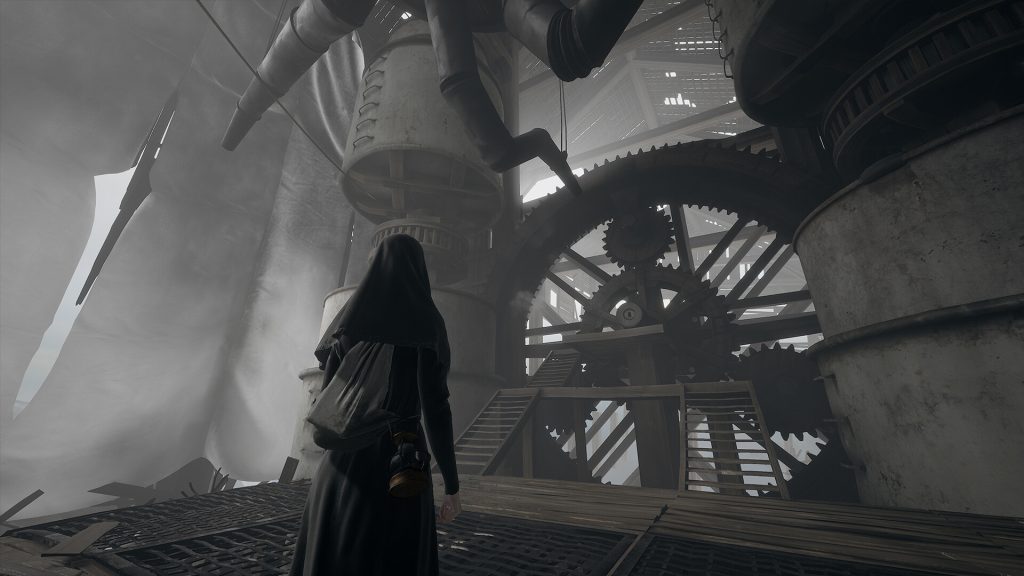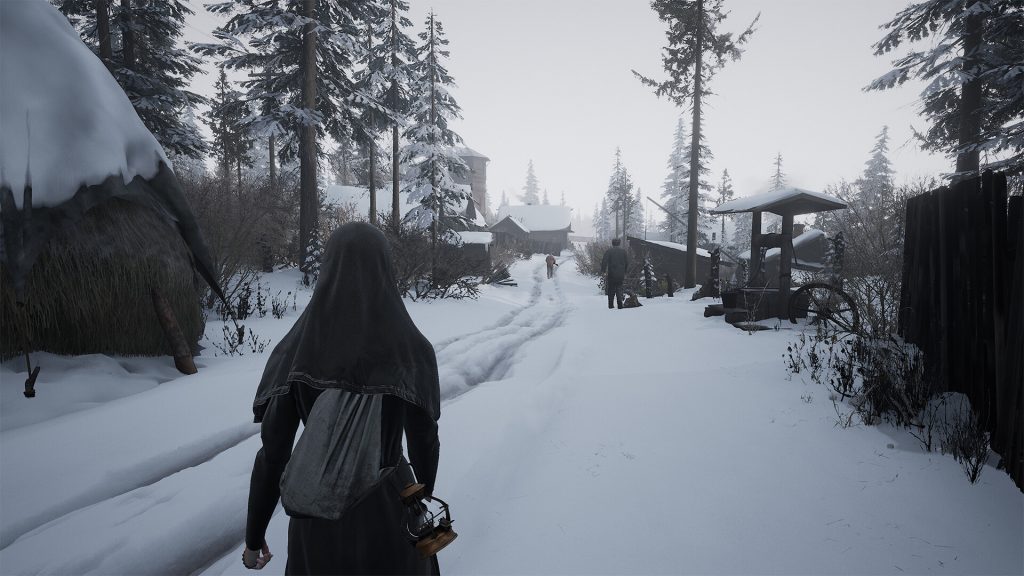I didn’t expect to laugh during my playthrough of Indika. I wasn’t sure if I was supposed to laugh, but that might partially be the point. I surely didn’t anticipate the voice of the demon—Satan himself—in the protagonist’s head to be so calmly snarky during her first death as she stepped too far off of a pier and straight into the cold river below.
The comment caught me off guard. I’m not sure that I’ve had such a visceral experience with a line of dialogue during a player-caused death since Shadow the Hedgehog. Regardless of intent, the moment pulled me in.
Developer Odd Meter maintains this tension throughout Indika. Part horror game, part narrative-adventure game, Indika is a beautifully crafted experience set against a nineteenth-century Russian landscape. Its story, which examines a world where religion and reality collide, will surely haunt and amuse in near equal measure. It is a game made possible by developers fleeing Russia, whose themes are timely and timeless in unnerving ways.

Walking Beside Her Demon
Indika creates a series of tensions right from the start, as if the collective tissues of the game depend on them.
Indika is a young nun with the devil in her ear. While she is the only one who can hear the demon, the juxtaposition of his exploratory thoughts and her daily tasks and expectations as a member of a religious community creates an interesting story backdrop—one that balances entertainment with discomfort.
Dialogue with the devil reveals who Indika is, what she thinks about, and to what lengths her mind wanders. These conversations between Satan and her inner voice make Indika feel more human, as the two divulge secrets, desires, and longings.
The repetition of Indika’s religious labor—from gathering water to lighting candles for worship—is cleverly incorporated into gameplay. Early on, you’ll encounter opportunities to earn skill points and level up as you complete actions. However, these points are completely arbitrary, and leveling up doesn’t affect gameplay. The skills on the skill tree simply allow Indika to accrue even more points.

It is hard to say if the points earned throughout the game for such labors are more for Indika’s enjoyment or the player’s catharsis, as the game’s informative load screens quickly reveal that any numerical scores associated with these tasks are meaningless. The game constantly reminds the player of the futility of collecting these points.
And yet, I went out of my way to do every activity to earn them.
Indika isn’t lying to you. The points are pointless.
But momentarily, they meant something to me.
While I won’t spoil it here, the tension between what is meaningful and meaningless—from made-up scores, to ethics and the daily performance of being humans within institutions—develops in meaningful ways the more Indika progresses.

Cinematic, With a Twist
Indika mostly plays like a walking simulator. This isn’t a mark against it. The game’s gorgeous character designs and carefully crafted pathways create a wonderful museum of sorts.
While playing as Indika in the game’s present day, there are occasional puzzle or mini-game sequences. A couple of these are visually memorable, even if they play out in strange or occasionally frustrating ways. There aren’t any resources to manage, nor health and stamina bars to watch.
When failed activities lead Indika to her demise, her demon will make a snide remark and the game will reload at the previous checkpoint. This is, after all, even during temporary death sequences, a story about a young nun and the demonic voice in her head seeking to deliver a letter while “avoiding” temptation; and, by God, Odd Meter is going to tell it, sidesteps and all.
The game shines when it breaks away from its series of walks and mini-games with pixelated moments that hark back to gaming’s past. These moments are teased in the game’s opening and more fully realized as the narrative progresses during flashbacks of Indika’s past. Her youth prior to being a nun presents a story that many players have heard or seen before, but one that I wish Odd Meter gave us a little more time in, if only for more pixel art and heart.

Each of these flashbacks also presents its own mini-game-style mechanic that reimagines or remixes an element introduced during the present-day sections. It’s a comparison that, again, invites tension. The 2D pixelated flashbacks, with their shared gameplay and archaic art, present a tension between the past and present, allowing the player to briefly reminisce on gaming’s past while playing a game that takes advantage of modern hardware.
These tensions allow Indika to entwine narrative and gameplay in interesting and at times disturbing ways.

Final Thoughts
I spent a little more than five hours with the young nun, her devil, and the characters we met along our adventure. Yet, maybe contradictory to its brevity, Indika is a slow burn. (Another tension, I suppose.) This isn’t the type of “horror” game where constant physical violence, explosions, or gore guide the protagonist through its world. It is instead a long, meditative corridor that shines brightest during its experimental interventions.
Indika is well worth your time, especially if you have a rather complex or—dare I say it—messy relationship with organized religion. Its approach to theology and philosophy doesn’t break new ground but does present these questions within the evolving interactive media of video games.
I hope this isn’t the last that we see of the character, her world, or her devil. Even if it is, the game’s final moments will stick with me—haunting the corners of my imagination—for some time.
Score: 7.0/10
Indika, developed by Odd Meter and published by 11 bit studios, is out now for PlayStation 5, Xbox Series X|S, and Windows PC. It retails for $24.99.
Disclaimer: A review code was provided by the publisher.
Clint is a writer and educator based out of Columbus, OH. You can often find him writing about Middle English poetry, medieval games, or video games. He just finished a PhD in English at the Ohio State University. You can find his academic and public work at clintmorrisonjr.com.










